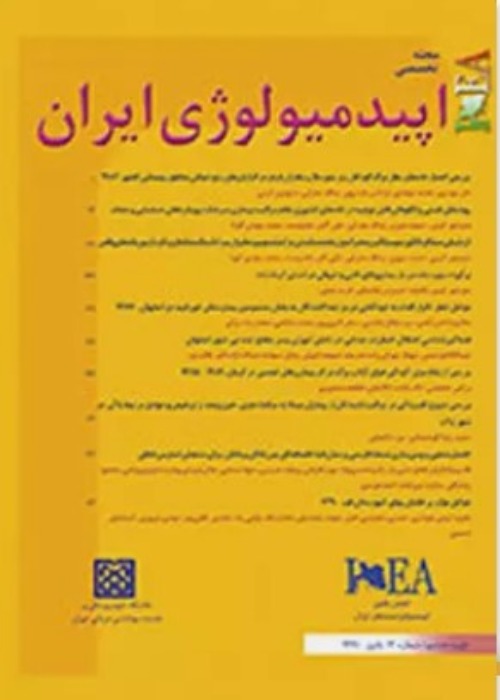Experience of a population- based study on needs and health status of affected people in Bam earth Quake
Abstract:
Background And Objective
On 26 December 2003, an earthquake measuring 6.5 on the Richter scale struck the city of Bam and the surrounding villages. This study was conducted to determine the needs of the affected population on the 19th and 20th days after the quake to help with the prioritization of relief activities and efficient resource allocation. Materials And Methods
Following a feasibility study on 10 Jan 2004, a team consisting of volunteer students of School of Public Health at KUMS was assembled and trained. Each of the 8 groups consisted of 3-4 students with at least 1 man responsible for security on the field. On the 13th and 14th of January, using a cross-sectional design, 60 clusters including 420 households, 7 households in each cluster, were studied based on a Cluster Geographic-Based Sampling (GBS) Plan.Results
Fifty-five households (13.1%) had children < 2 years, 81 (19.3 %) had children aged 2-5 years and 68 (16.2 %) contained people more than 65 years old. Thirty-seven households (8.9%, CI 95%: 6.4-11.7%) had changed their residence in Bam from one zone to another; the main reason for this was poor environmental health conditions (85%). The main source of health and social messages for families was word of mouth 284 (67.6%). The most commonly needed items were bathrooms (73.8 %, CI 95%: 68.9-78.7%), food (68.8 %, CI 95%: 62.6-75.0%) and warm clothes (67.4 %, CI 95%: 60.9-73.8%). The most frequent illness was acute respiratory infection (59.8 %, CI 95%: 54.3-65.2%). Two hundred households (47.6%, CI 95%: 42.6-52.6%) complained of difficulties in obtaining health and medical services. The main barrier to access was transportation problems due to long distance (38.1%, CI 95%: 35.6-40.6%). Conclusion
We conclude that relief operations should be continued to provide basic public health facilities. Active delivery of health and medical services should be strengthened, and problems related to reproductive health should not be ignored. The GBS plan is a useful tool in the post-disaster surveys. Using volunteer university students was a rewarding experience and teaching and application of "Disaster Epidemiology" should be improved in this country.Language:
Persian
Published:
Iranian Journal of Epidemiology, Volume:1 Issue: 1, 2006
Page:
33
magiran.com/p409529
دانلود و مطالعه متن این مقاله با یکی از روشهای زیر امکان پذیر است:
اشتراک شخصی
با عضویت و پرداخت آنلاین حق اشتراک یکساله به مبلغ 1,390,000ريال میتوانید 70 عنوان مطلب دانلود کنید!
اشتراک سازمانی
به کتابخانه دانشگاه یا محل کار خود پیشنهاد کنید تا اشتراک سازمانی این پایگاه را برای دسترسی نامحدود همه کاربران به متن مطالب تهیه نمایند!
توجه!
- حق عضویت دریافتی صرف حمایت از نشریات عضو و نگهداری، تکمیل و توسعه مگیران میشود.
- پرداخت حق اشتراک و دانلود مقالات اجازه بازنشر آن در سایر رسانههای چاپی و دیجیتال را به کاربر نمیدهد.
In order to view content subscription is required
Personal subscription
Subscribe magiran.com for 70 € euros via PayPal and download 70 articles during a year.
Organization subscription
Please contact us to subscribe your university or library for unlimited access!


